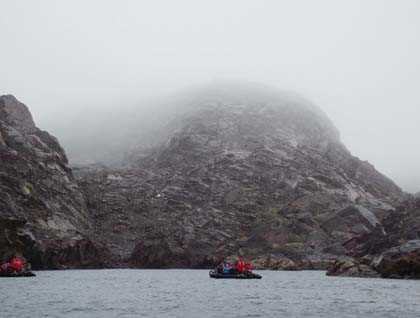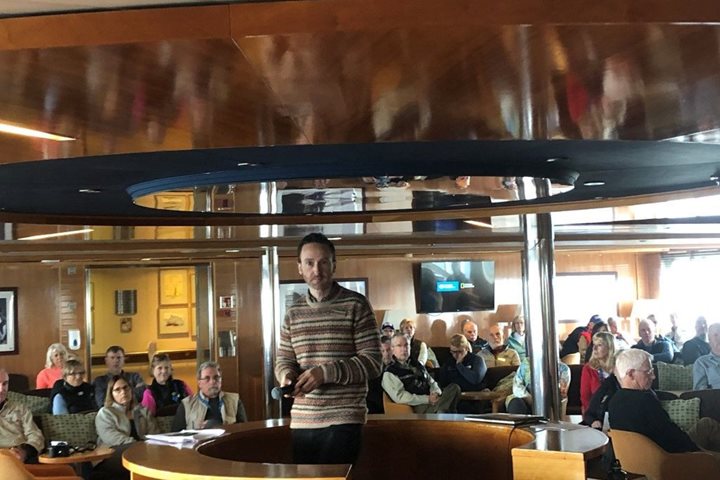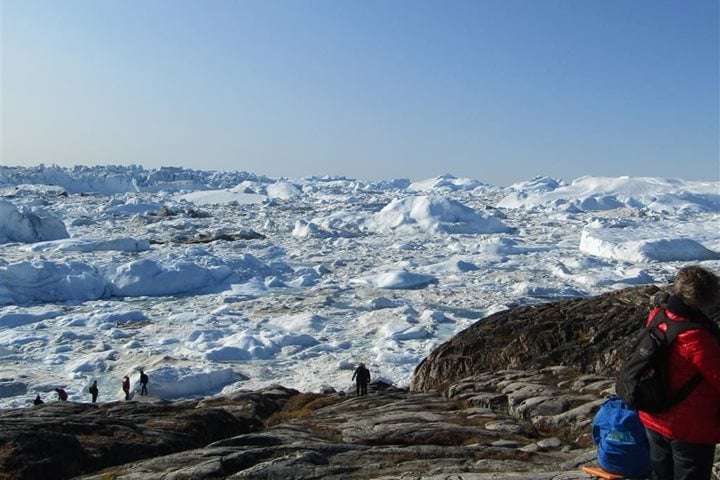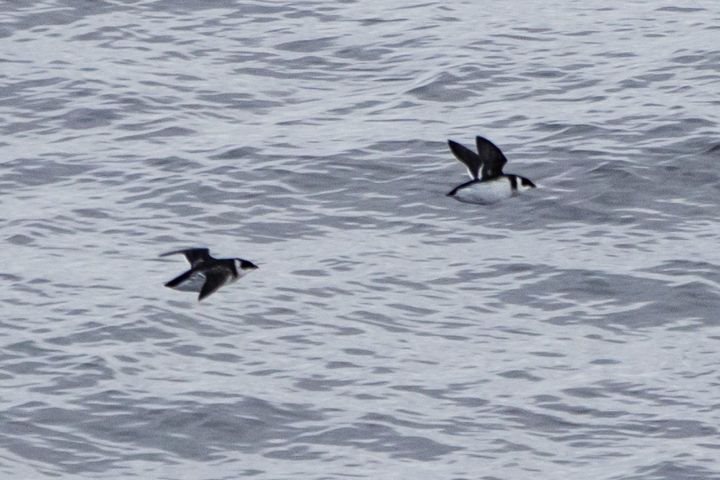We spent the morning exploring the Lower Savage Islands, which are located just off the south-eastern tip of Baffin Island. Although aboriginal peoples are known to have inhabited these islands (at least seasonally) for hundreds of years, the first Europeans to note the islands were Robert Bylot and William Baffin aboard the ship Discovery in 1610. Because of their strategic location near the mouth of Hudson Bay, these islands became the site of an annual trading fair between the Inuit and the Europeans that continued for nearly three centuries.
This dramatic and well-named archipelago consists of three main rocky islands stretching approximately eight miles in length with about the same distance in width. The islands are separated by long, narrow, steep-sided channels, which make them perfect for exploring by Zodiacs. Conditions seemed far from ideal when we first arrived, because it was foggy and drizzling, but the first intrepid group to go cruising found the inclement weather actually added to the mystery of the islands and produced some nice photographic possibilities. So, why the moniker Savage? The first Zodiac to enter into the channel at the north end came upon a polar bear meandering about on the rocky slope. We had not planned any landings here, and the bear simply reinforced that thought.
Without landing to examine rocks closely, the geology of the Lower SavageIslands is a bit difficult to identify precisely, because the surface rocks are heavily affected by staining and/or coverage by lichens, mosses, etc. The islands appear to be either granitic or gneissitic in nature. They may actually be a combination of both, meaning some areas are simply exposed intrusive igneous material, i.e. granite, and other areas are exposed metamorphosed material, perhaps granite that has been changed into gneiss through the effects of intense heat and pressure. There is some obvious banding or foliation typical of metamorphism, but there is also much evidence of exfoliation, a process by which relatively thin layers of rock peel off from granite surfaces that occur from pressure release when the overlying burden is eroded away and the surface expands.
Hydrothermal vents must have been active here in the distant past, judging by the impressive coatings of rust and sulfur compounds that seem to have emanated from many of the cracks. The geology has also been affected by glacial carving, judging from the smooth, rounded surfaces in the lower areas. Jagged, angular rocks in the upper regions give evidence of having been severely fractured and broken up by freeze-thaw effects.
In the late afternoon, as National Geographic Explorer cruised northward in Baffin Island’s Frobisher Bay, we spotted another loosely organized pod of bowhead whales. What bizarre whales they are compared to our more familiar species. These are massive, rotund animals with huge heads that make up fully one-third of their body length. Bowheads are built for slow filter feeding, but definitely not for speed. Scattered icebergs and distant views of glaciers among mountains off both sides of the ship gave us a most enjoyable cruise during the afternoon and evening as we headed for our final port-o-call…Iqaluit.







